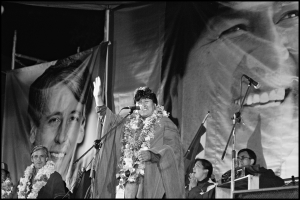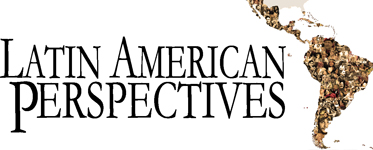LAP STYLE GUIDELINES
LAP seeks writing that is clear and concise. Authors should keep in mind that the journal is interdisciplinary and avoid jargon and obscure language understood only by a narrow group of readers. Concepts with which readers may not be familiar and specialized terminology should be kept to a minimum and when used, should be clearly explained for non-specialist readers.
The following style guidelines should be followed for manuscript text:
- Separate Title Page File: Submit a separate file with the title page which includes all title of your book review, authors’ names, a short biographical paragraph for each (maximum 25 words), addresses, phone numbers (work and home) fax numbers, e-mail addresses, vacations or other dates when authors might be unavailable and address and phone numbers for those dates, and any other pertinent contact information. A corresponding author should be identified to receive correspondence from LAP. To permit anonymity in the review process, provide only the title on the manuscript itself, which should be in a separate file.
- Abstract and key words: Provide an abstract of no more than 150 words that summarizes the manuscript’s main argument, including its theoretical contribution. List five key words.
- Spacing: Everything must be double-spaced: text, biographical paragraph, end notes, author’s note/acknowledgments, references, block quotations, appendixes, tables.
- Italics: Use italics, not underlining, for italics. This is a change from older guidelines. No bold is used.
- Page Justification: Everything is left-justified, with a ragged right-hand margin (no full justification).
- Sections: Each section begins on a separate page: title page, text, appendix(es), notes, references, each table, each figure. Insert location of table and figures at the appropriate place in the text (e.g. “Table 2 about here”).
- Names of organizations: The first reference to an organization should be in the original language followed in parenthesis by an English translation or description and an acronym, if one exists. For example, the Partido Guatemalteco del Trabajo (Guatemalan Labor Party, PGT). Later references to the organization should be by acronym.
- Endnotes: Endnotes use Arabic numbers and will be automatically formatted by Word. Notes are to be used only for substantive observations, not for purposes of citation.
- Permissions: Authors are responsible for obtaining written, signed permission for all quotations from copyrighted publications and all tables or figures taken from other sources. Any quotes without permissions must be paraphrased or deleted before the journal goes to press. For photographs, see the relevant section below after References.
- In-text citations: Identify books, monographs, articles, statistical sources, etc. at an appropriate point in the text by last name of author, year of publication, and pagination where appropriate, all within parentheses. There is no need for “ibid” or “op. cit..” Specify subsequent citations of the same source in the same way as the first citation. Each in-text citation has a corresponding listing in References, except for personal communications (interviews, correspondence, etc.).
Examples of in-text citations follow:
1.: “Yet as economist Clyde Eastman (1983)…”
2. “from 4.2 percent to 12.3 percent (Julius, 1900: 114–122).”
3. “…have claimed that this is so (but see Lissak, 1962: 99, for a conflicting view).”
4. “…as was previously suggested (Felix, 1965a: 331).”
5. “…as many have noted (Blumberg, 1984; Chafetz, 1991; Eisenstein, 1979)…”
6. “and the Wall Street Journal (February 7, 1991)…”
Personal interviews and correspondence: To cite personal interviews or personal correspondence, place in parentheses in the text (Name, Type of personal communication, Place, Date) as in these examples: “…Análisis editor Juan Pablo Cárdenas (interview, Santiago, August 30, 2000) asserts …” or “…that grassroots video makers value (Javier Bertín, interview, Santiago, July 27, 1998). Place any general statement about the interviews at the end of the biographical statement (along with the acknowledgments and anything about previous versions of the article). Do not list personal interviews or personal correspondence in the references
References: In a section titled “References,” typed double-spaced, list all items alphabetically by author. List more than one publication by the same author by year of publication, earliest first. Within a given year, author’s works should be in alphabetical order with letters (a, b, c, etc.) attached to year of publication. Cite the name of a state or foreign country after a city only if the city is not well-known. For articles, citation should include volume and, in parentheses, month or season or number, and inclusive page numbers. All citations and references should be in 12 pt. font (the same font size as the manuscript. Word will automatically format end notes in 10 pt. font.
The following examples show reference format for commonly used types of sources:
Book
Grasmuck, Sherri and Patricia Pessar
1991 Between Two Islands: Dominician International Migration. Berkeley: University of
California Press.
Book Chapter
Rakowski, Cathy A.
1985 “The planning process and the division of labor in a new industrial city: the case of Ciudad Guayana, Venezuela,” pp. 195–223 in John Walton (ed.), Capital and Labour in the
Urbanized World. London: Sage.
Journal Article
Waylen, Georgina
1994 “Women and democratization: conceptualizing gender relations in transition politics.”
World Politics 46 (April): 327–354.
More detailed examples are available on-line at the following and other sites:
The Chicago-Style Quick Guide gives samples of reference list entries with corresponding in-text citations and can be found at http://www.chicagomanualofstyle.org/tools
Another useful on-line source for Chicago Style information is at Ohio State University:http://library.osu.edu/help/research-strategies/cite-references/chicago-author-date which gives examples of books, articles, on-line and other sources.
You can also consult the examples at the Williams College site: http://library.williams.edu/citing/styles/chicago2.php.
Figures, Tables, Charts, Graphs and Photographs
Figures, Tables, Charts, Graphs and Photographs
Tables, charts and graphs should be used sparingly and should be limited to those that provide substantial information that clarifies or supplements the text. Where the information can be presented economically in words, words are preferable. Tables that do not meet this specification may be removed during copyediting.
Select photos and other illustrative material carefully. Only in extraordinary situations would we publish more than 6 visuals for a single article. If you submit more images, you may be asked to eliminate some or they may be removed in copyediting.
Indicate location of tables, charts, graphs, figures and photographs at the appropriate place in the text (e.g. “Table 2 about here”). Submit the actual visual material in a separate file.
Visual material must meet the technical standards described below in order to be published.
Graphs, tables, and maps should be prepared to be legible at a page width of 5 inches. If an image requires the full-page width, it must be submitted in that size. It cannot be scaled up after origination as a smaller image. Maps with wording or symbols that are too small to read easily will be removed during copyediting. Usually maps are published at full-page width (with margins determined by the map shape) with the length (typically up to one half page) determined by the map shape.
Submit visual material in a separate file from the text of the manuscript. Embedding image files in Word documents automatically reduces the resolution below the required print quality.
Tables
Tables should be submitted in Word format only and should be editable. Do not submit tables in Excel. All tables are printed without internal vertical or horizontal lines or shading, and therefore distinctions between entries must be made clear without these features. Submit tables in a separate file from the manuscript text.
A table that is too wide for the page can be printed broadside (bottom to top), but this is wasteful of journal space and is therefore discouraged.
Graphs and Charts
All the words on the graph or chart should be in English or the software used to prepare it should be editable in case the English needs to be corrected or non-English needs to be translated.
The caption will be printed underneath the graph or chart, so there should not be a caption on the graph or chart itself.
Graphs and charts will be printed in black and white, so the original should be prepared in black, white and shades of gray, not color, so that the differences will be clear in black and white (for example, use dots, stripes, dotted lines, or other distinct patterns). Captions should not include wording that refers to color.
The units of each axis of a graph should be identified.
Fonts
The lettering used in the artwork should not vary too much in size and type (usually sans serif font as a default).
Line Art
Line art should be supplied with a minimum resolution of 800 dpi.
Photographs
Submit the original camera file if possible: without any modifications, cropping, or other “corrections.” Submit in original jpeg or raw format; we can make all cropping and image corrections in-house.
Resolution refers to pixel density or the number of pixels per inch. The publisher requires a resolution of 300 dpi for adequate print quality. Divide the pixel count by 300 to determine the maximum print size for a specific image. For example, an image of 600 x 400 pixels could not be printed larger than 2 x 1.3 inches, which is too small. Interior photos should be printable as at least 4 x 3 inch images, so photos should be a minimum of 1200 x 900 pixels, preferably larger, a minimum of 1500 x 1125 pixels to allow for cropping. The minimum file size for submission for full-page reproduction as in a cover photo is 2500 x 1800 pixels, equal to 8.33 x 6 inches, to allow for cropping. For all photos, the higher the resolution, the better. You should submit the image in the maximum resolution available. However, do not resize, change, modify, or edit images for submission – we prefer to work with the original, unmodified file. Most especially, do not upsize images.
Photos may be submitted in color or black and white. Color photos will be converted to black and white for the print edition but will appear in color in the on-line version.
Do not embed images into the text of a Word document. This automatically reduces the resolution to below publication quality. Images should be submitted in a separate file in jpg format. Be aware that images sent as text attachments are often too small to be used for publication. The preferred method for submitting photos is through Dropbox. Groups of photos can be included in a single folder, and then saved as a .zip file to be uploaded to Dropbox.
The principal caveats and suggestions for you to consider while taking your own photographs are: to set your camera’s menu to record large, high quality jpegs, and, in the case of “point and shoot” cameras, to limit the camera to an ISO/ASA setting of no higher than 400.
If you are using a DSLR camera, and if you are interested in recording the highest quality possible for potential future uses, you might consider recording your photos in Digital Raw format. Many DSLR cameras can be set to simultaneously record two copies of each photograph, one in jpeg and a second in raw format, that can allow you quick access to the pre-processed jpeg image, while the raw can be processed to a tiff or jpeg file, and also archived as the “digital negative.”
Publication Rights
If they are not the photographer, authors are responsible for obtaining the publication rights for any photographs to be included in their articles. Please request the photo rights form from the LAP office. We cannot publish photos downloaded from web sites without obtaining the rights either from the photographer or from the web site, if the site controls the rights. If you use images under a Creative Commons license, provide the author, the type of license, and the URL of the image file.


